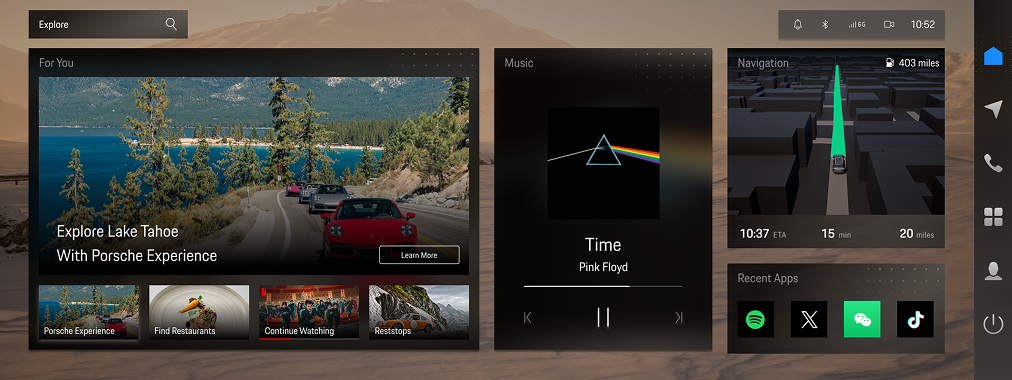

Automotive cabin experience redesign for Porsche electric SUV
Scope & My Role
Team Project
Physical Prototype
UI Design
Team Member
Jason Jiang
Jerry Cai
Yilin Jin
Bryana Lee
Timeline
2025, 14 Weeks
Project Type
Automotive HMI Design
Product Design/Prototype
In the autonomous era, the vehicle cabin is no longer just a cockpit—it is becoming a living space. As driving fades into the background, comfort, safety, and emotional well-being take center stage.

This project envisions a future Porsche SUV that extends the brand’s spirit of performance into intelligent, human-centered experiences—where the car not only moves people but also supports, protects, and revitalizes them throughout their journey.
Luxury mobility is being redefined. As families spend more time inside vehicles that double as lounges, offices, or wellness spaces, expectations are shifting from mechanical performance to adaptive intelligence.
While Porsche leads in craftsmanship and driving precision, it has yet to fully embrace real-time responsiveness and well-being integration. Our research explores how Porsche can evolve its strategy—merging iconic performance with next-generation intelligence to create an emotionally attuned, health-aware cabin experience for modern families.

SUV Dominance as Porsche’s EV
Growth Lever
Cayenne and Macan SUVs made up 59% of Porsche’s global sales in 2022. Porsche is expanding this success by electrifying its SUV line—Macan EV, Cayenne EV, and a 3-row flagship SUV—targeting the affluent family EV market.

Smart Tech Gap Undermines EV
Appeal in China
Porsche’s in-car experience lags behind Tesla, NIO, and XPeng in AI, personalization, and connectivity. This contributed to a 19% YoY sales drop in China, as buyers prioritize smart features over brand legacy.
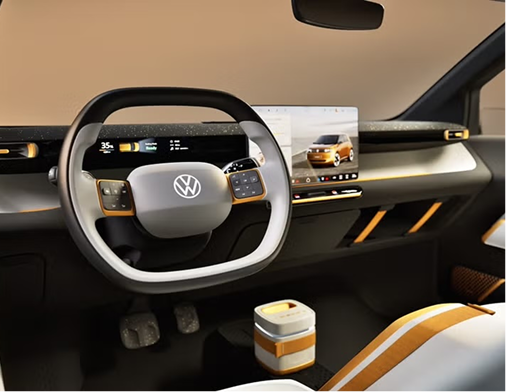
VW Group’s Strategic Shift to Catch
Up in Software
To close the innovation gap, VW is partnering with Rivian ($5B JV) and XPeng ($700M stake) to co-develop next-gen EV platforms and intelligent cabin tech—accelerating Porsche’s push toward software-defined vehicles.
As part of our research, we visited various electric SUV dealerships to examine dashboard controls in detail, exploring how both digital interfaces and physical controls are designed for drivers and passengers.

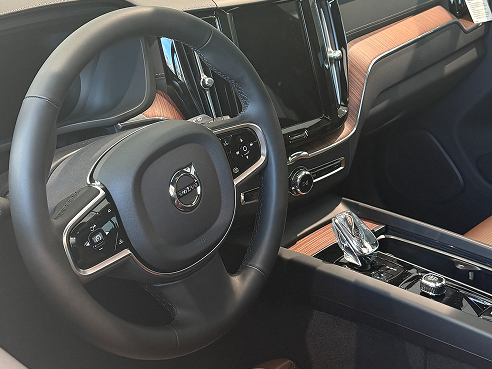
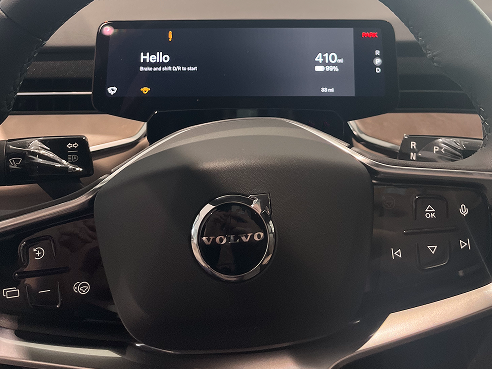
Through research on future trends in automotive experiences, we found that biometric sensors are expected to play a larger role in personalization, safety, and even emotion analysis. From this insight, we identified an opportunity to design an intelligent system that not only detects mental stress but also responds to health emergencies—enhancing trust, comfort, and safety within the cabin.
We conducted research on how emotions are visually communicated through variations in color and intensity, which informed how the system could display emotional states in a clear and intuitive way.
Before designing the interfaces, we mapped out how many screens would be needed and determined their placement within the frame.
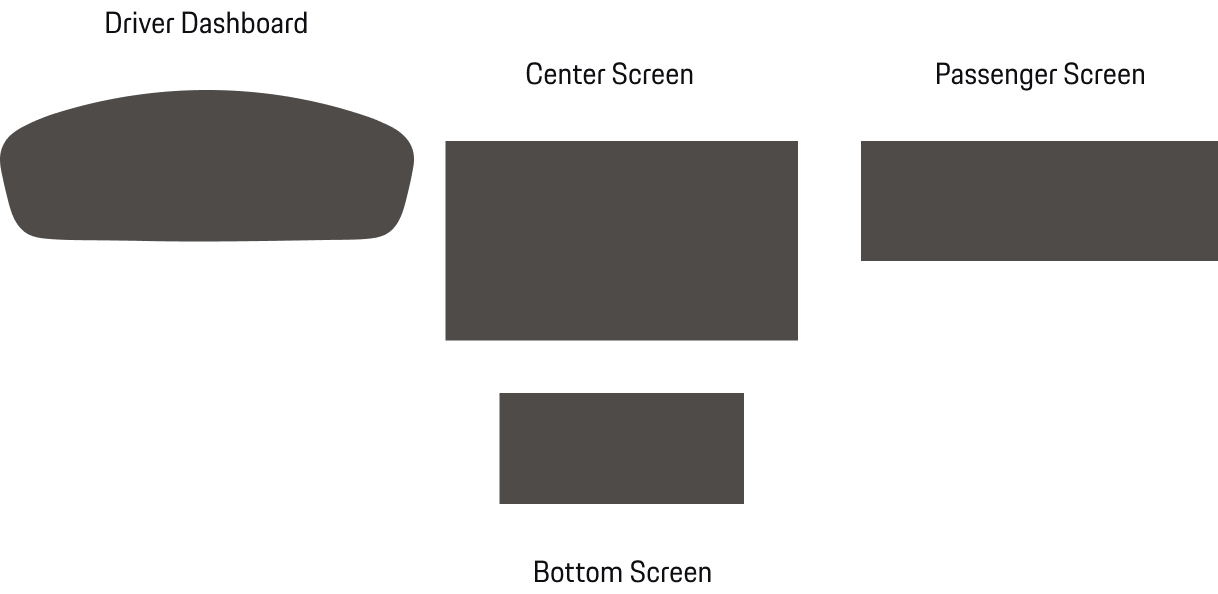
We then made a list of features and organized them into a chart to map which features belonged on each display.

We quickly tested out the usability of our screens through eye-tracking and click-heat mapping to observe how users visually and physically interact with the key interface elements. With these findings, we were able to further refine the user interface and information architecture.
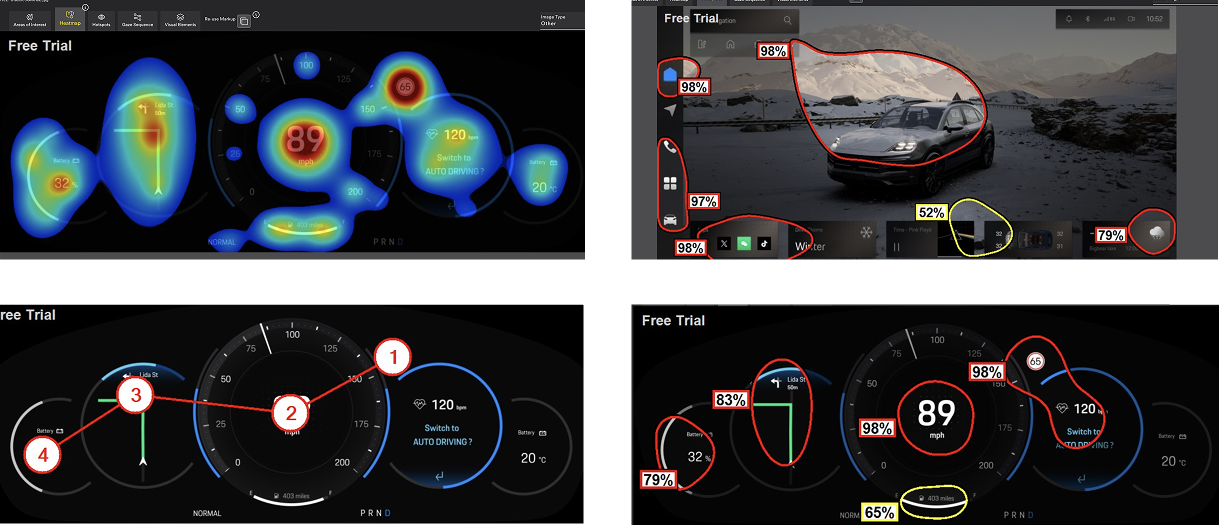
With the research and concept, we began by building out a full-scale cabin to visualize the placement of physical controls alongside digital screens. This allowed us to identify key design areas and ensure each feature was positioned for usability and experience.
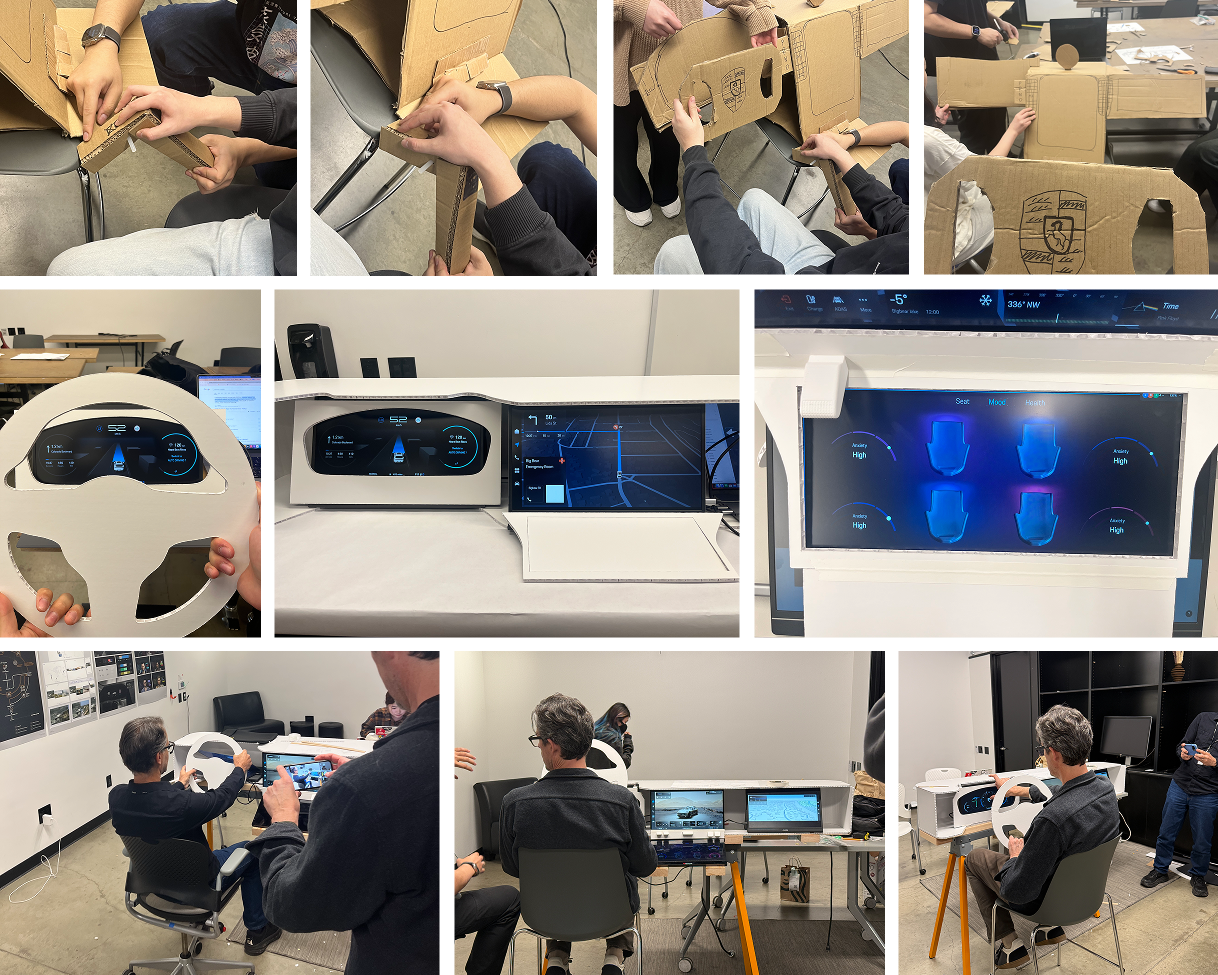
Feature 1
Detects mood changes in both the driver and passengers using in-cabin cameras and biometric seat sensors, allowing it to address emotional stress in real time. Designed to proactively respond, it enhances safety, comfort, and trust throughout the in-car experience.
Feature 2
Monitors health data such as BPM, blood oxygen, and body temperature for the driver and all passengers. In case of an emergency, the cabin will respond immediately by navigating to the nearest hospital, connecting with a remote doctor for first-aid advice, and sharing real-time health data with the corresponding hospital.
Physical Prototype
System is divided into four different displays : the driver dashboard essential driving information, a central display for driver-focused navigation, a passenger display for support and entertainment, and a lower display for health and comfort. Physical buttons were also reintroduced and linked to the screens for fast, tactile control.
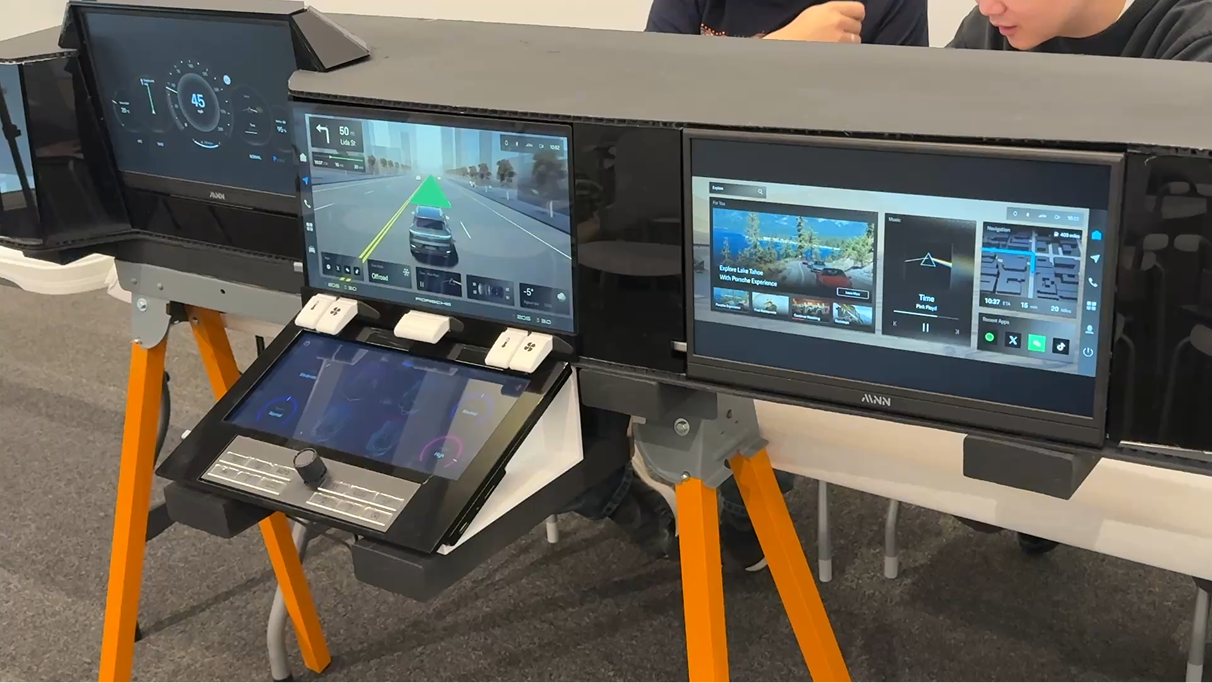
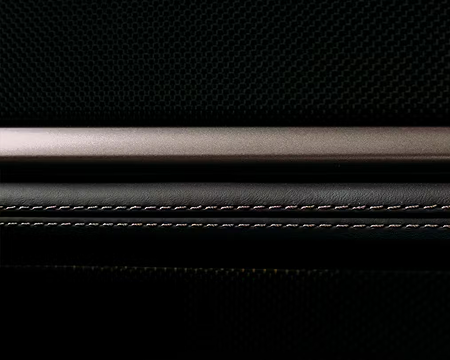
Quiet Luxury & Heritage
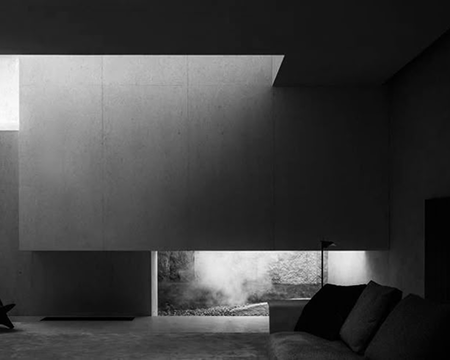
Modern & Precise
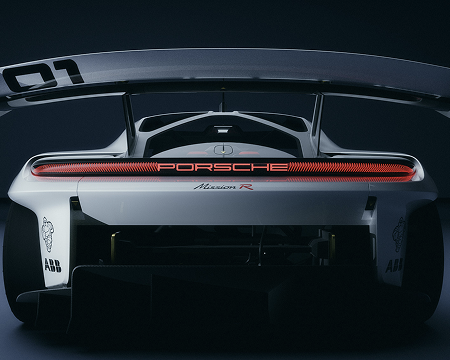
Performance & Innovative
Porsche Next Semibold 64px/48px/36px/32px
Speedometer
Porsche Next Regular 36px/32px/24px/20px
System Font
Tachyon Light 128px
1234567890
Tachyon Light 36px/32px/24px/20px
HVAC System

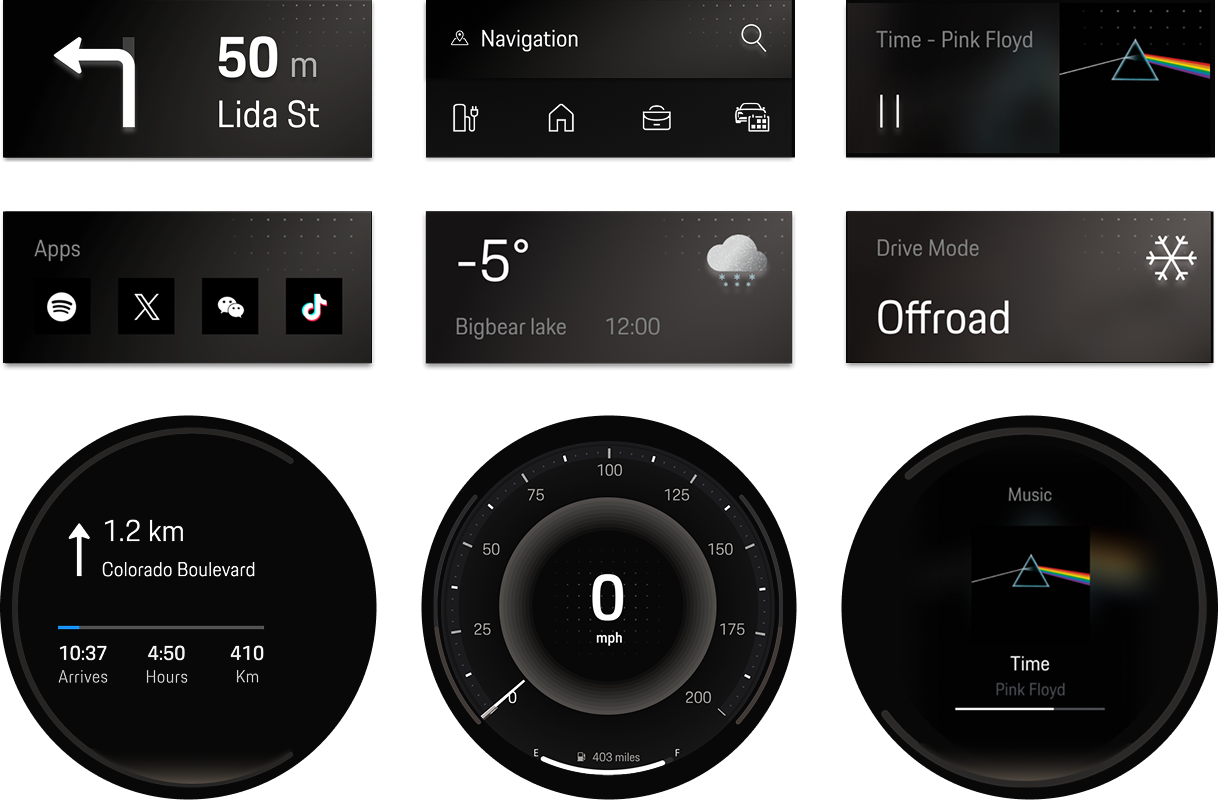
Driver Dashboard
5-Ring Gauge
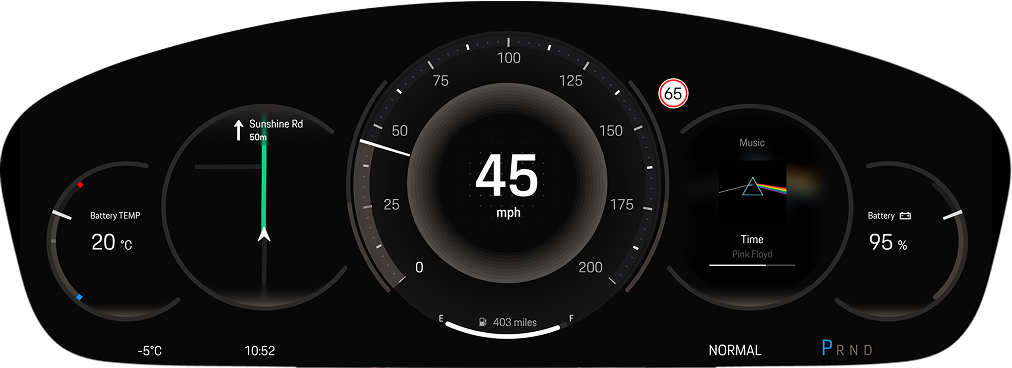
Auto Driving Suggestion
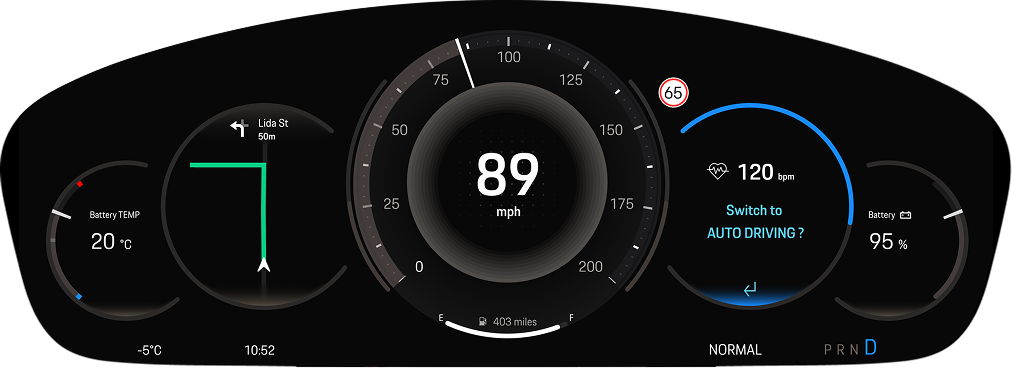
ADAS Auto Driving
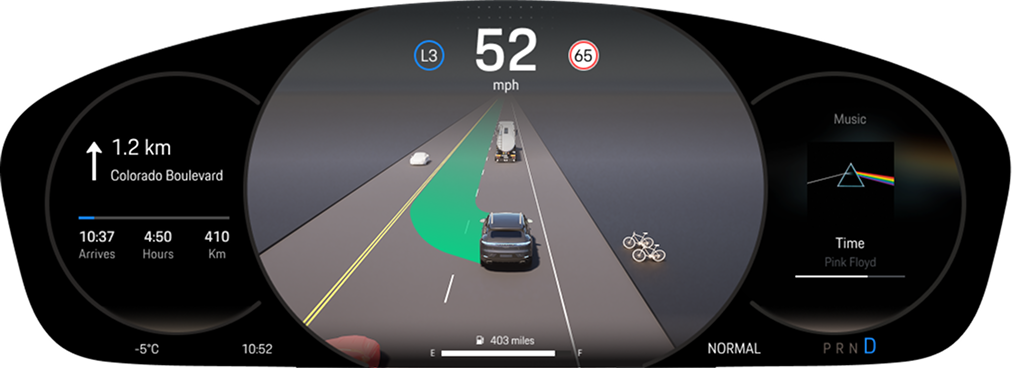
Manual Takeover Suggestion
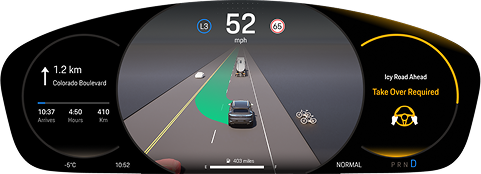
Manual Takeover Requirement
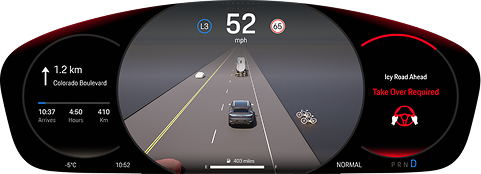
Center Screen
Park/Charging Mode Car Control
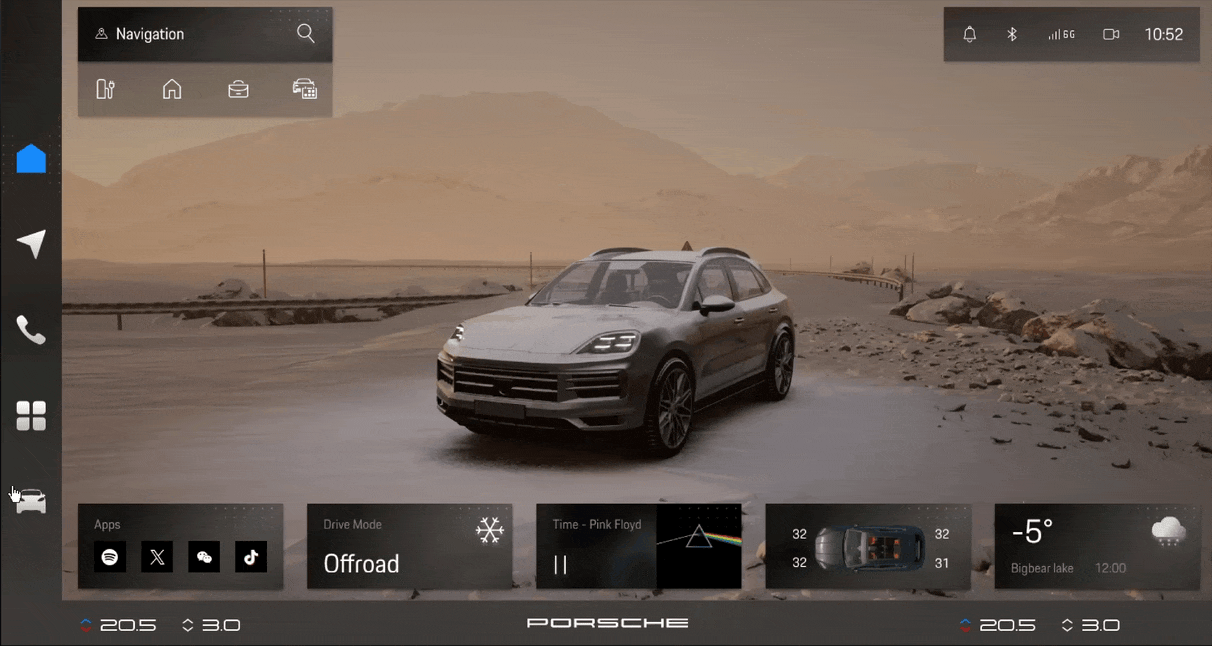
ADAS View
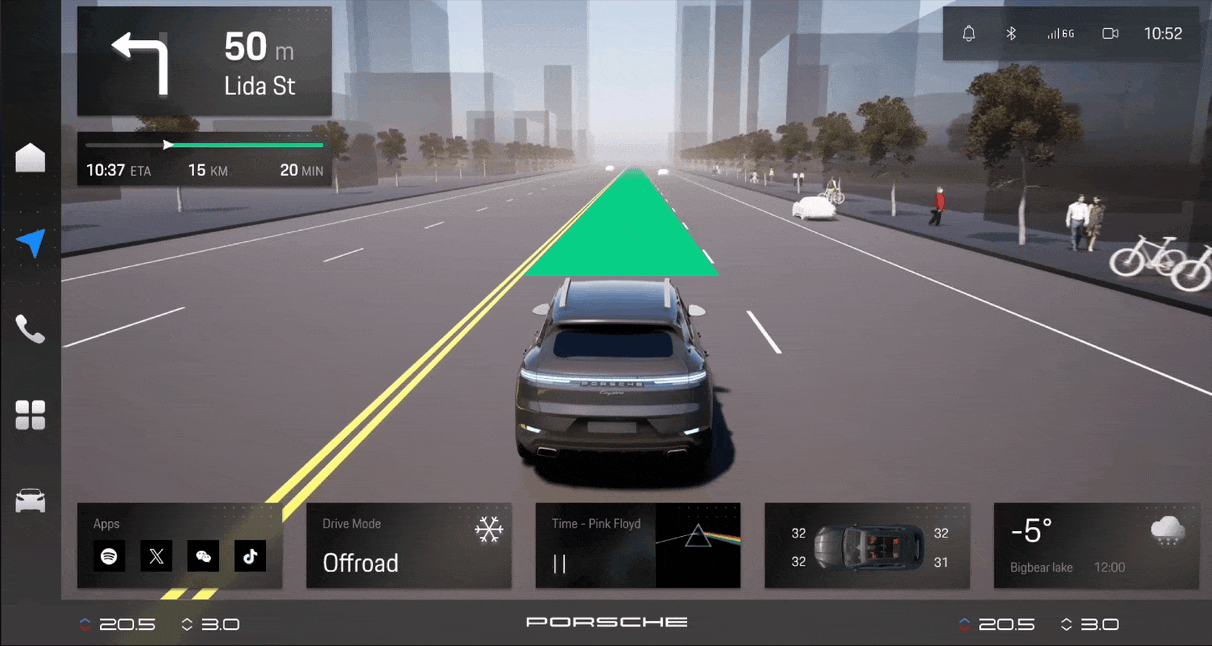
Bottom Screen
Mood Visual
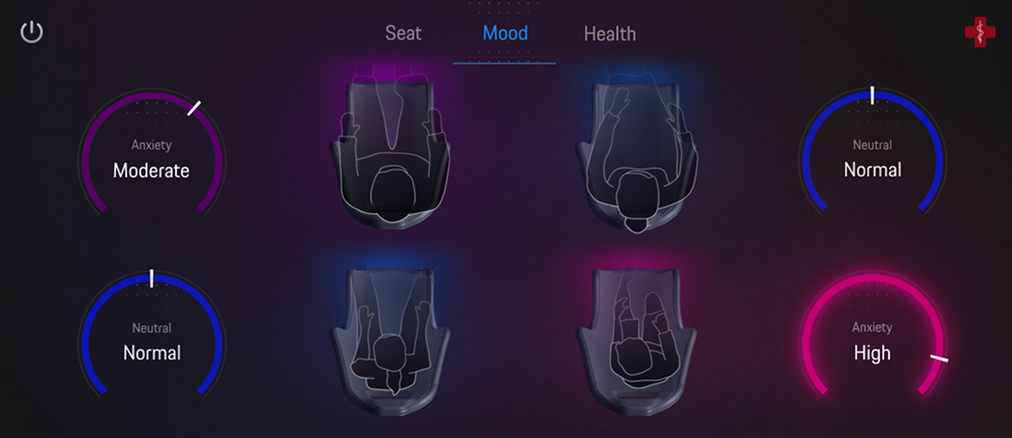
Health Data
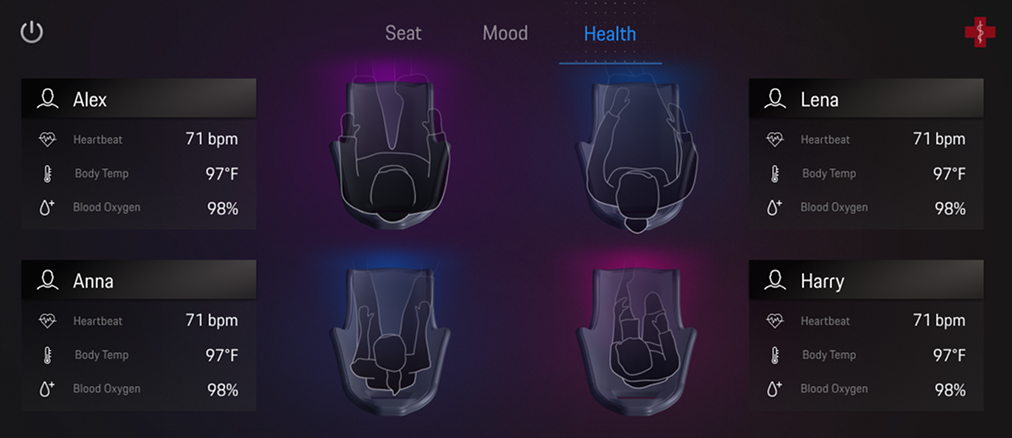
Emergency Health Data
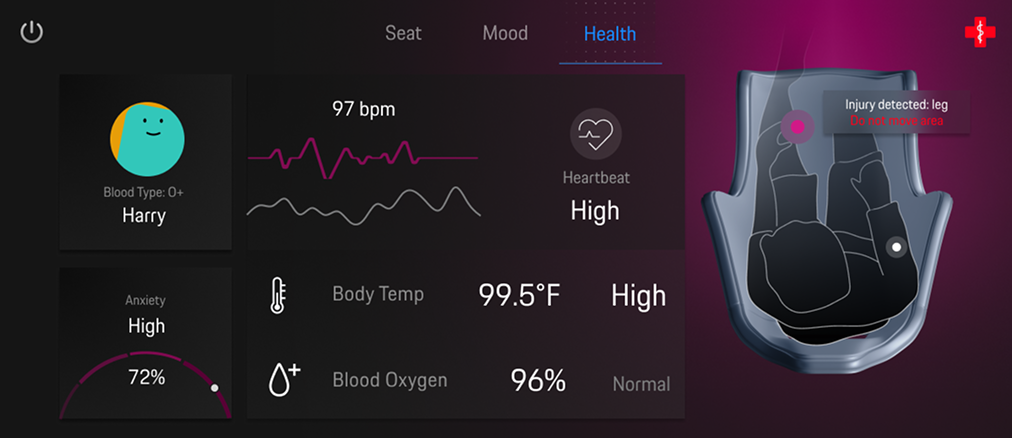
Passenger Screen
